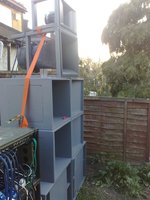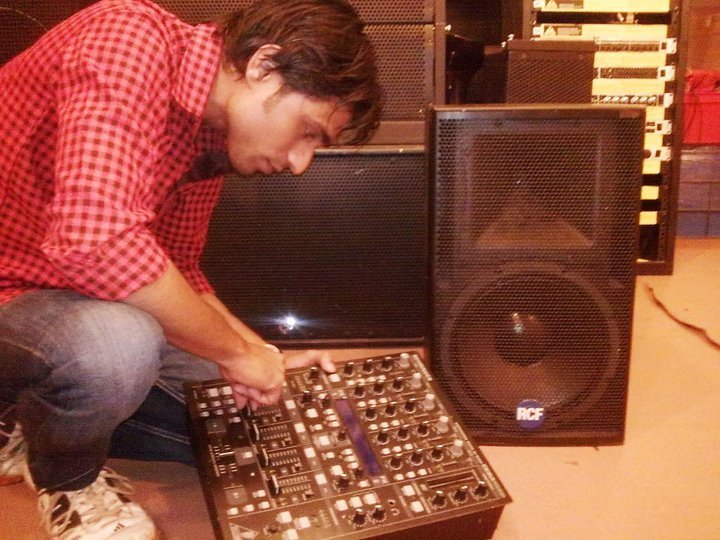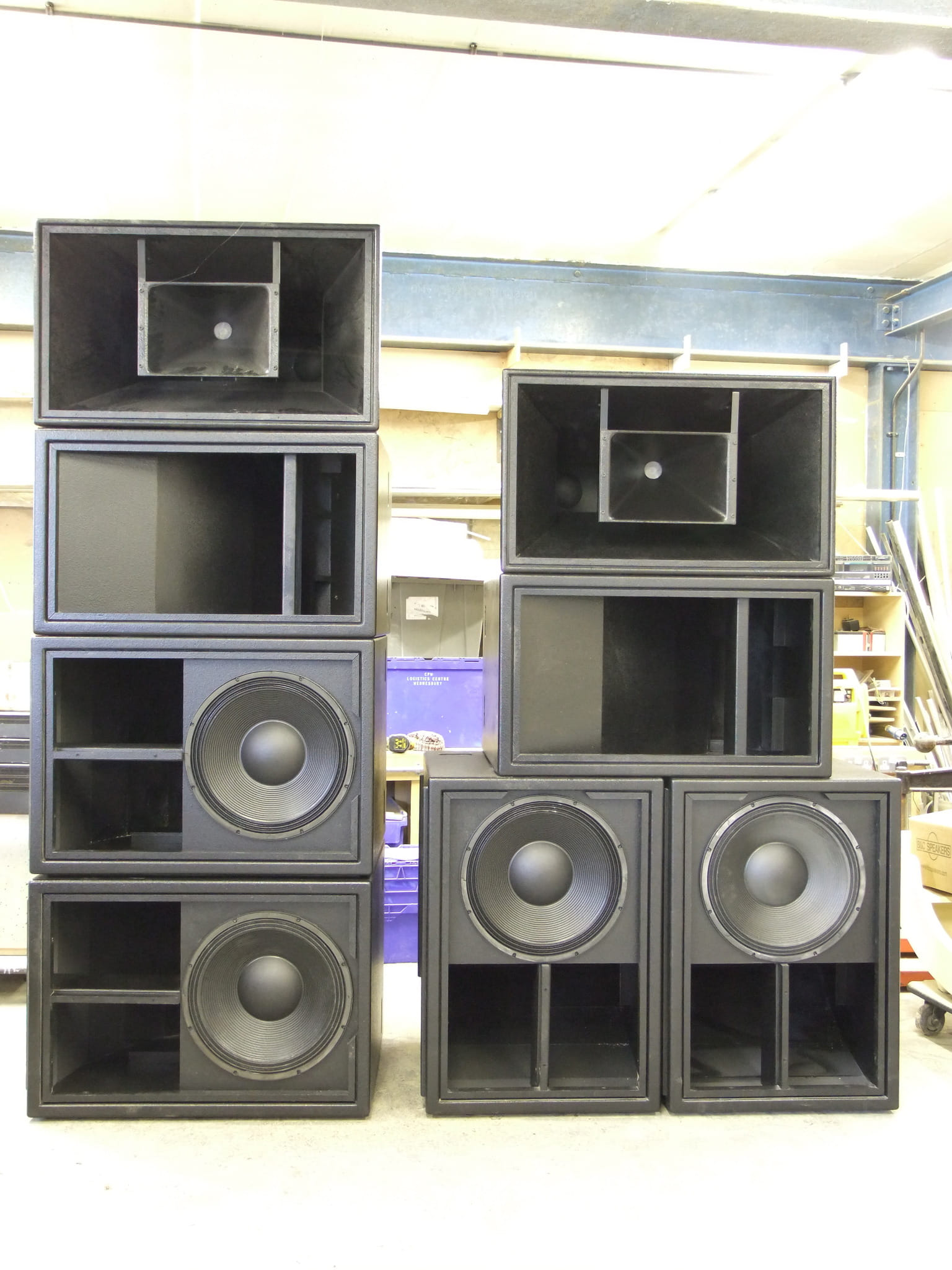- Posts: 563
- Thank you received: 25
SOS215P
- giveortake
-
 Topic Author
Topic Author
- Offline
- Administrator
-

What is your philosophy of life or your creed ?
\"Have a good time, ALL THE TIME\"
Wisdom is better than silver and gold !
Please Log in or Create an account to join the conversation.
- nickyburnell
-

- Offline
- Platinum Member
-

- Posts: 802
- Thank you received: 0
Please Log in or Create an account to join the conversation.
- playdjboyes
-

- Offline
- New Member
-

- Posts: 17
- Thank you received: 0
Also u can use Beyma 15G40 & CP750ND with 1200Hz passive crossover
Please Log in or Create an account to join the conversation.
- Tony Wilkes
-

- Offline
- Elite Member
-

- Posts: 273
- Thank you received: 3
nickyburnell wrote: Angles would be good. Very trendy all this multi angle stuff, a ton of work though.
I think that for most user's it is a total waste of time. So called reduction in standing waves etc. is IMHO a crock of shyte.
And as for better to array them er no comment.
Tony
Please Log in or Create an account to join the conversation.
- steve_b
-

- Offline
- Junior Member
-

- Posts: 30
- Thank you received: 0
As Tony said this is not true. From a performance point of view the difference is negligible, and very very few are designed to be arrayed at the same angle as the side walls. However with a decent table saw it is not too difficult to cut the angles.
Reasons why I use a trapezoid design are:
1. I don't find them much more trouble to make.
2. The shape visually slims the cabinet.
3. I can fix the baffle size and use the taper to adjust the cabinet volume.
4. It sometimes enables a more efficient use of a sheet of ply.
If number 1 didn't apply then I wouldn't worry about 2 and 4, and I would ajust 3, the cabinet volume, by some other means.
For most loudspeaker based on the bass reflex style, plans are not really necessary. An internal volume and tuning frequency should allow anyone to produce something similar. More useful would be any cross over and eq settings. These will have far more impact on the performance of the cabinet than getting the taper angle of the cabinet walls correct.
Please Log in or Create an account to join the conversation.
- playdjboyes
-

- Offline
- New Member
-

- Posts: 17
- Thank you received: 0
REQUIRED in New cabinet:- CALCULATING DRIVER PARAMETER & INTERNAL VOLUME LITERS(VB),(FB) also very IMP FREQUENCY TUNNIG.
The word “speaker” is the shortened form of the word “loudspeaker” and it refers to a device that converts electrical signals into sound waves that we can hear.
Why do drivers come in so many different sizes? Because it is nearly impossible to make one piston driver that can reproduce sound waves over the entire 20 Hz to 20 kHz frequency range of human hearing. To produce low frequencies a driver needs to have a large diaphragm and enough mass to resonate at a low frequency. To produce high frequencies a driver needs to have a small diaphragm with a low mass. Obviously, these requirements are in opposition so drivers are usually designed to produce only a portion of the sound. This gives rise to multi-way speaker systems like the two-way system shown above. It uses a tweeter for the high frequencies and a woofer for the low frequencies.
The job of the crossover network is to divide the audio signal. For this reason, crossover networks are sometimes called “dividing networks”. The frequency where the sound is divided is called the “crossover frequency”. Ideally, a crossover frequency is chosen which protects the tweeter, allowing it to produce only those frequencies that it can reproduce the best, and allows both the response and coverage pattern of the woofer to blend well with the tweeter. Note: The “coverage pattern” is the shape of the listening area where a driver will provide a relatively uniform direct sound pressure level.
I m a sound engg student i just learn how to create new idea & discuss with all. any suggestion plz reply me
thanks
Please Log in or Create an account to join the conversation.
- tony.a.s.s.
-

- Offline
- Moderator
-

- Posts: 1344
- Thank you received: 12
I guess the Spektra range of cabs were the first trap cabs for me, and this was done to follow a fashion.
Peace and goodwill to all speaker builders
Please Log in or Create an account to join the conversation.
- Tony Wilkes
-

- Offline
- Elite Member
-

- Posts: 273
- Thank you received: 3
With my own boxes I try to minimise the visual aspect by making them as narrow as possible given the driver size and then using wrap around grills. The picture I posted a while ago of my double 12" jobby shows this very well.
For a given box design just net volume and port sizes are all that's required. I think that anyone serious about making loudspeakers should then have learned the necessary skills to take it from there.
Its a bit like taking up golf and then playing St. Andrews without even going for any lessons or spending time on the driving range, not to be advised
Gets of high horse.
Tony
Please Log in or Create an account to join the conversation.
- playdjboyes
-

- Offline
- New Member
-

- Posts: 17
- Thank you received: 0
Please Log in or Create an account to join the conversation.
- Tony Wilkes
-

- Offline
- Elite Member
-

- Posts: 273
- Thank you received: 3
playdjboyes wrote: thanks tony i will try to test all things.
Prashant, I was in no way criticizing you or your design. You have the right to design and make boxes in any way that you like.
I wish you well with your endeavours and hope that you can make a career out of something that you obviously have a passion for.
Tony
Please Log in or Create an account to join the conversation.